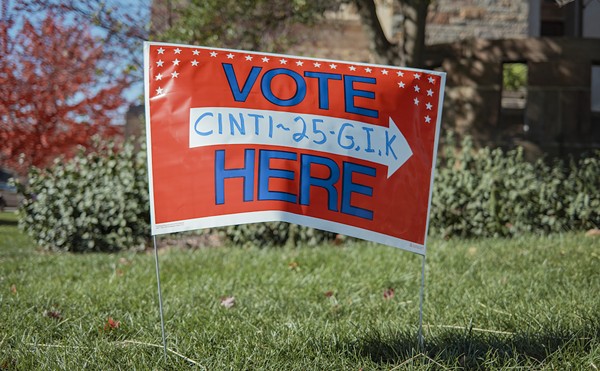After winning three local design awards for its space, Emersion Design is celebrating the most important “win” of them all: platinum certification by the U.S. Green Building Council (USBGC). And they pulled it off for less money than a standard office space renovation.
“The USGBC has finished their initial review for Emersion Design’s space at a platinum Certification Level,” says Chad Edwards, an architect with the firm. “There are three points that the USGBC is challenging. Without those three points, we are still working in a LEED platinum office. Now it is just a matter of how high can we go.”
More than bragging rights for Emersion, this award will give Cincinnati and Ohio the only architectural/engineering firm in the country with a platinum office. Emersion expects to get the final word and the plaque soon.
There are only two other firms with an “all-architecture” focus in the U.S. with Platinum offices — one in New York City and one in Seattle.
LEED, or Leadership in Energy and Environmental Design, is a set of standards and certification process for sustainable green building practices developed by the USGBC (see “Building a Green Future,” issue of March 15, 2006). Having that certification might not mean much to some companies, but to Emersion officials it’s proof that they walk their talk.
The 17-month-old company links its work and corporate culture to its “passion for exceptional designs that advance clients and society.”
“We understand that the built and the natural environment are inextricably and vitally linked,” the company’s Web site states. “We commit to our responsibility as stewards, through our work and through our membership and leadership in the U.S. Green Building Council.”
When it came time to expand its office space leased in the Hamilton County Business Center in Norwood near Xavier University, Emersion became its own client and decided to go for the platinum certification.
“If you’re going for platinum, you’ve got to have your strategy together,” says Sean Hesse, an architect with Emersion and chair of the USGBC Cincinnati Chapter. “Platinum is a whole different way of thinking.”
Evidence of that can be found everywhere in the in the office: a worm farm in the kitchen composts food waste (UC students have already come to thin the herd so they can start their own farm); extra space for parking bikes out of the elements; and light censors that automatically dim or turn off overhead lights. And it’s all portable.
“Everything is designed to be taken apart and taken with us when we graduate from the business center,” Hesse says. “Nothing is glued down or permanently adhered other than a screw or something that can be undone.”
Then there’s the obsessive attention paid to materials selection.
“The sun shades are ceiling tiles that we re-purposed from Building Value,” Hesse says. “Those actually came out of a Cincinnati public school. Before Cincinnati Public Schools renovated the school, Building Value went in and removed all the ceiling tiles.”
The rectangular shapes poke out between each column of windows along one wall of the office space with a note attached to one that explains how the shades reduce glare from the sun. The system allows for more natural light and reduces electricity usage; they’re also locally acquired and recycled materials, translating into less pollution or waste. All of these points are criteria for the LEED certification process.
There’s also the added value of the conversation starter, “Why do your windows have wings?”
One of the conference room walls is another re-use story. The panels came from an old office cubical.
“They were in a building that we were working on in Indiana,” Hesse says. “The client didn’t want them any more, and they wanted to get rid of them. They were going to go into a dumpster. We said, ‘Let us take care of those for you.’ We used three fixed panels and we used (a) sliding door. Three more fixed panels and a sliding door ended up going to Building Value, which they have already sold.”
In addition to being enthusiastic supporters of entities like Building Value (www.buildingvalue-cincy.org), a nonprofit company that salvages building materials to resell in their its center while providing on-the-job training opportunities in construction and retail, Hesse says Emersion encourages its clients to utilize these local resources. In addition to being environmentally responsible, it can be cost effective.
“Our space — which included furniture, carpet, lighting and some mechanical work — (was) finished for $27 per square foot. The average would be around $40,” Hesse says. “It was cheaper for us to go for platinum than it was for us to stay at gold because the USGBC reimburses certification fees if you get certified at platinum level. We’re actually saving money going for the platinum certification.”
Never losing sight of the need for the cool factor, Edwards pipes up.
“It’s not just going platinum,” he says. “It’s going platinum with style.”
“And on a shoestring budget,” Hesse adds.
The added bonus was nobody had to fight over who would take out the trash after the renovation project. There was just one bag of packing foam to the taken out to the dumpster.





